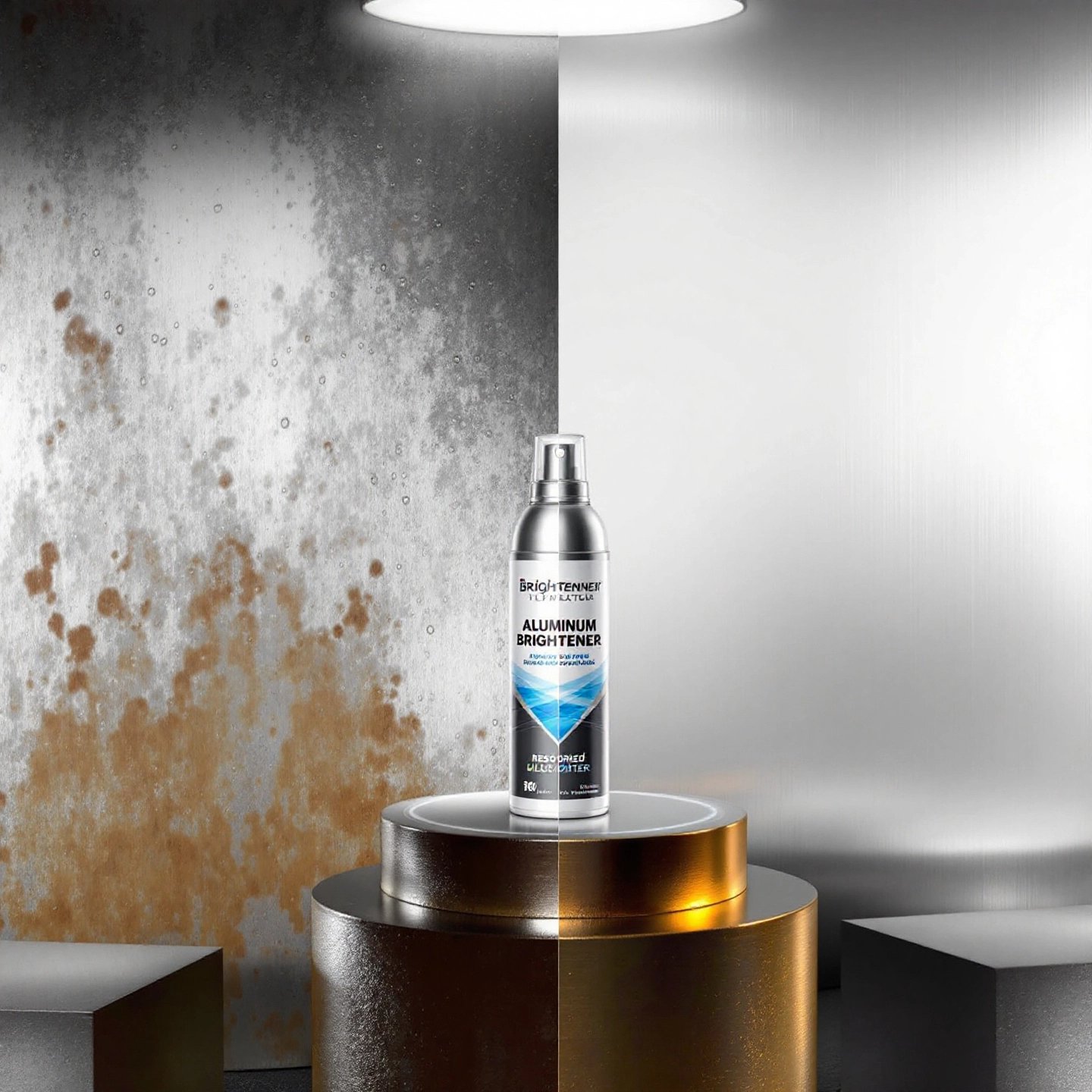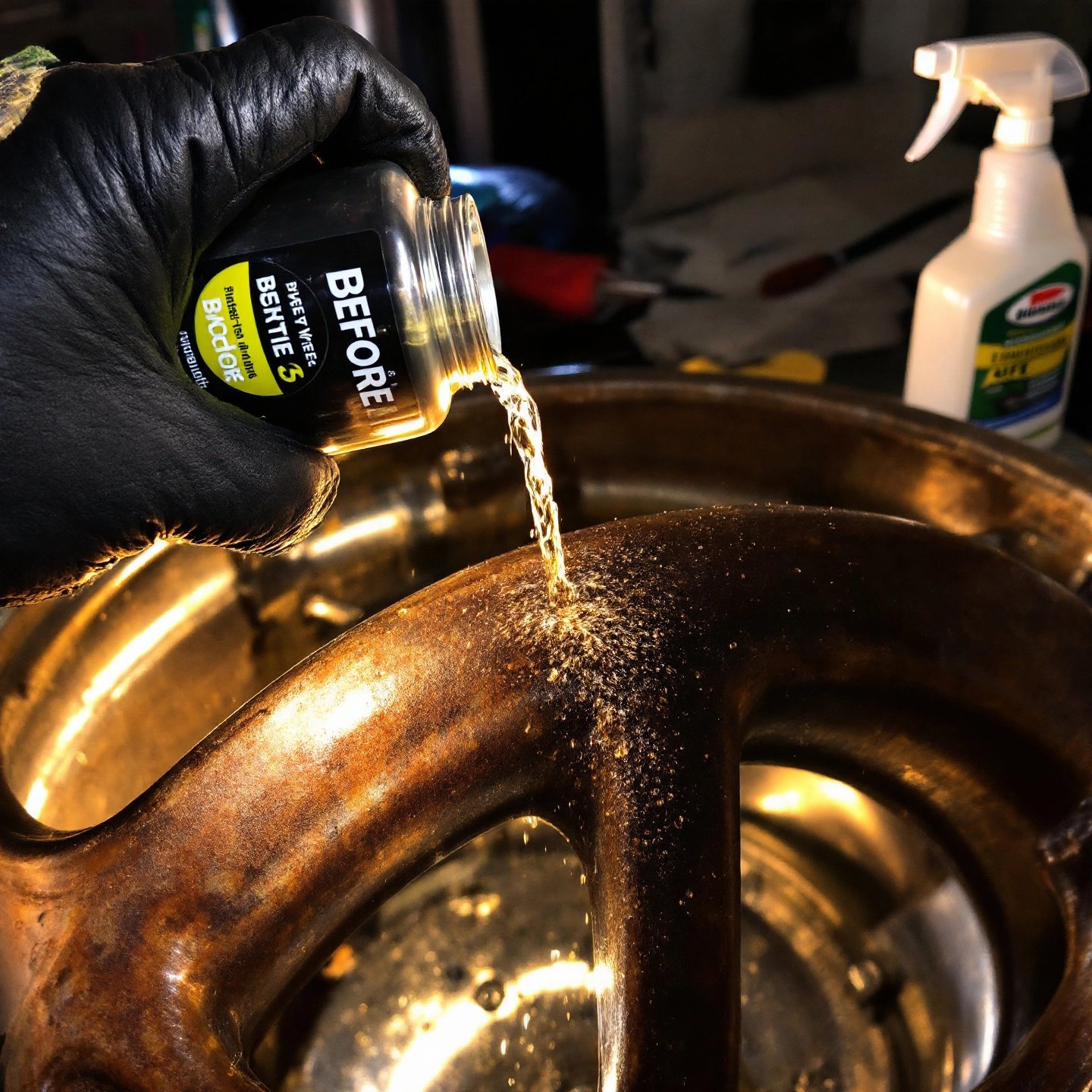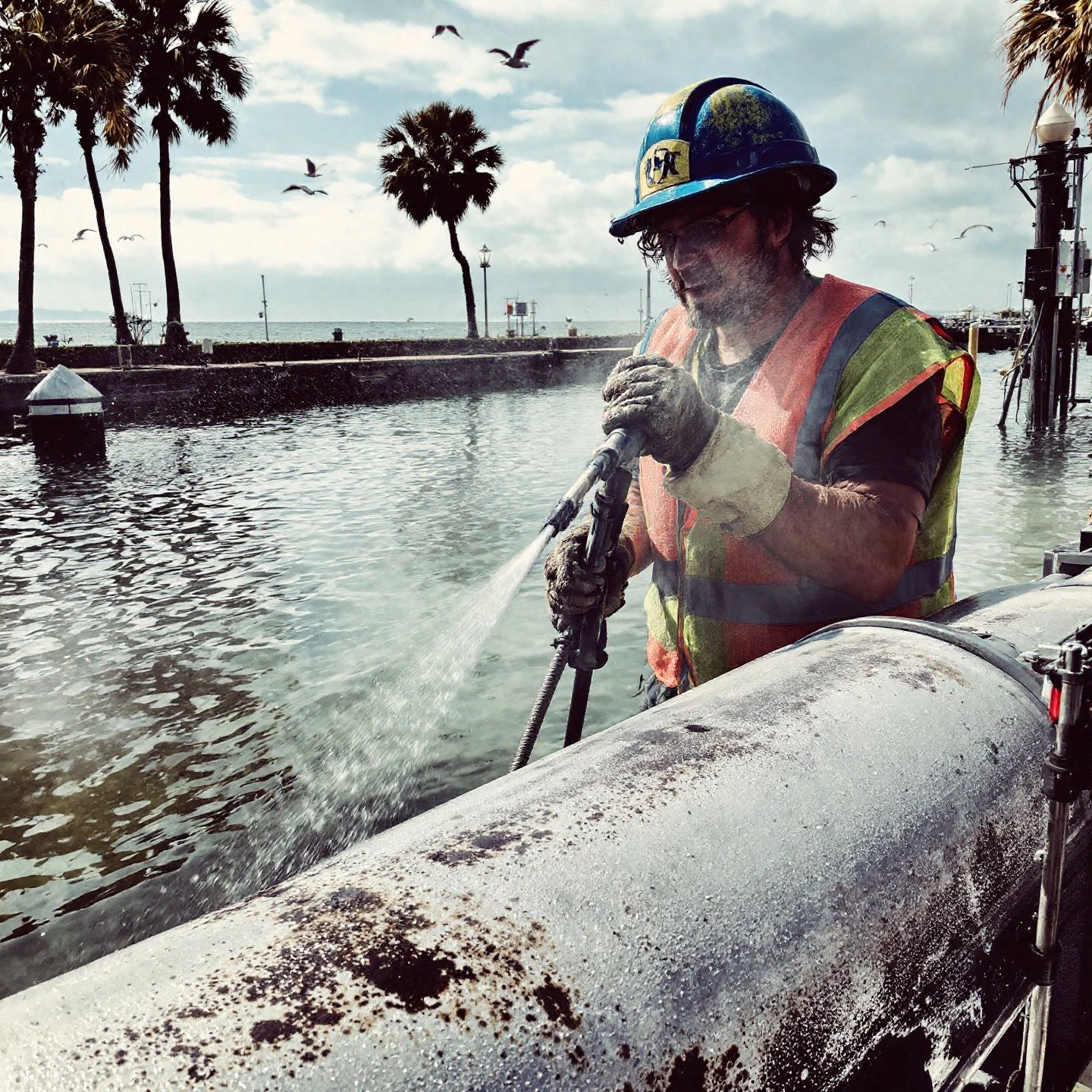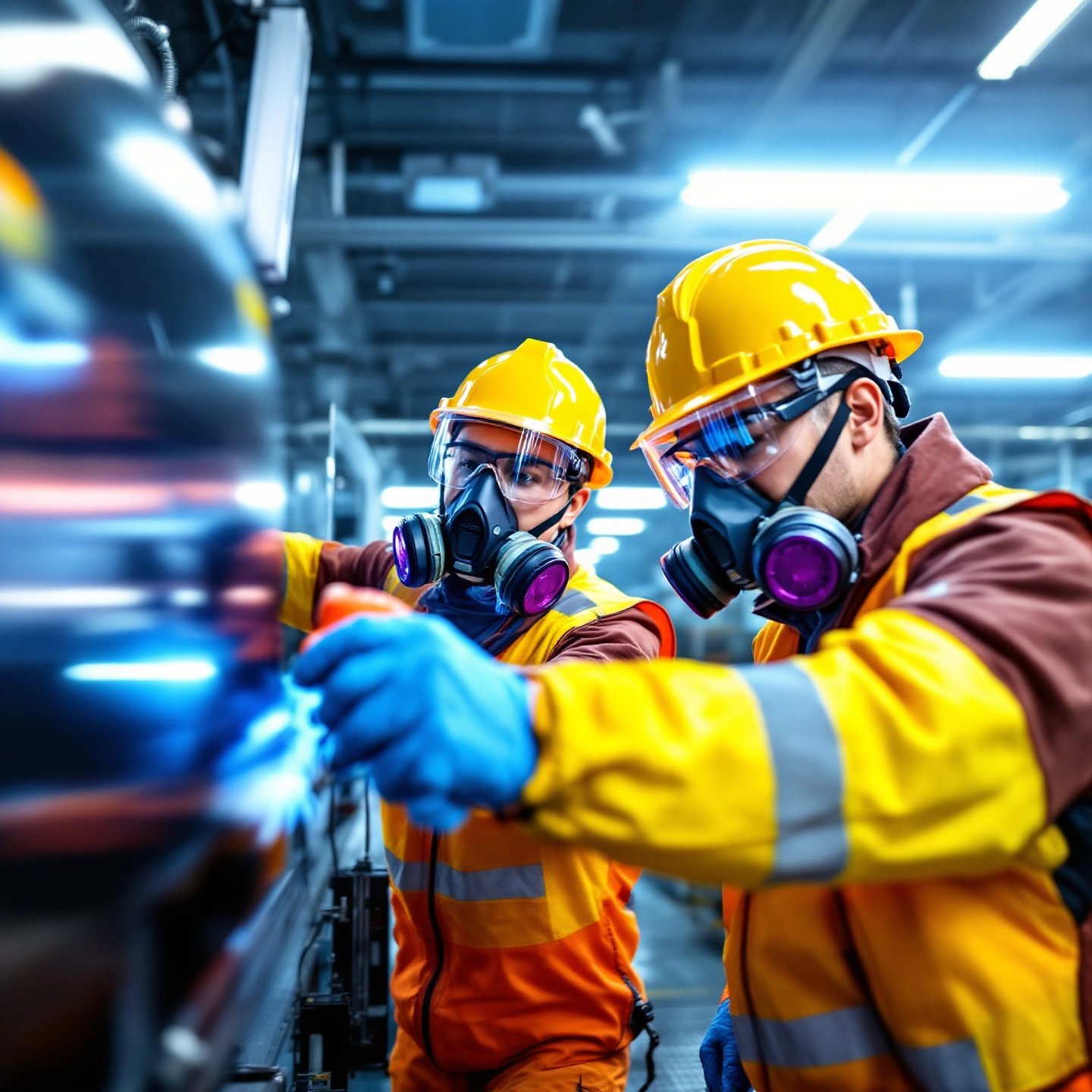
Have you ever noticed how aluminum surfaces lose their luster over time? Exposure to oxygen creates a chalky, oxidized layer that dulls everything from truck wheels to boat railings. This is where aluminum brightener steps in as a targeted solution—a chemical formulation designed to dissolve stubborn oxidation and restore metallic brilliance.
Unlike all-purpose cleaners, aluminum brighteners address oxidation at the molecular level. They work by:
These products prove indispensable across industries:
| Application | Common Uses |
|---|---|
| Automotive | Wheels, engine components, trim |
| Marine | Pontoons, railings, saltwater-exposed parts |
| Industrial | Machinery, structural components |
| Household | Patio furniture, cookware, decorative items |
As noted in industry studies , improper use can damage adjacent materials like paint or glass. Always:
Modern aluminum cleaner and brightener formulas balance effectiveness with material safety, but results vary based on surface quality. Premium alloys often require less aggressive treatments—a crucial consideration we'll explore in later chapters.
Whether you're maintaining a fleet of trucks or revitalizing vintage aluminum cookware, understanding these specialized cleaners is the first step toward achieving professional-grade results. Let's examine how to match products to your specific needs while preserving material integrity.
Why does the pH level of your aluminum cleaner matter? The secret lies in how these formulas interact with oxidation—the invisible enemy dulling your metal surfaces. Let’s break down the science behind effective brightening.
Aluminum brighteners fall into two primary categories based on their pH levels:
| Type | pH Range | Key Ingredients | Best For |
|---|---|---|---|
| Acid Aluminum Brightener | 1-3 | Phosphoric acid, fluorinated compounds | Heavy oxidation, industrial scale |
| Non-Acid Aluminum Cleaner | 6-9 | Surfactants, citric acid | Light stains, sensitive surfaces |
As shown in SCE Brighten Up’s technical specs , acid-based formulas (pH 1.8) use buffered fluorides to dissolve stubborn road film and oxidation. Non-acid alternatives, often alkaline-based per Eco-Point’s analysis , employ gentler chemistry for routine maintenance.
These products tackle contamination through three key actions:
Imagine pouring cola on tarnished aluminum—the phosphoric acid in both beverages and industrial cleaners reacts similarly, albeit with controlled intensity in professional formulas.
Not all aluminum is created equal. Consider these guidelines:
Always test cleaners on hidden areas first—some alloys react unpredictably to acidic treatments. Up next, we’ll explore how specific ingredients in these formulas determine their effectiveness across different applications.
What's actually in your aluminum brightener that makes it effective? The answer lies in carefully balanced chemical components working synergistically to combat oxidation. Let's dissect the three primary ingredients that power these specialized cleaners.
Phosphoric acid remains the gold standard for professional-grade aluminum brightener acid formulations. As detailed in phosphate industry research , this acid performs dual functions:
Hydrofluoric acid alternatives like ammonium bifluoride offer similar oxidation removal with reduced toxicity. These compounds release fluoride ions that:
As explained in Kao Chemicals' surfactant analysis , these molecules enhance cleaning through:
| Function | Effect |
|---|---|
| Wetting | Reduces surface tension for better solution spread |
| Emulsification | Suspends loosened contaminants |
| Rinsability | Prevents redeposition of dirt |
When applied to oxidized aluminum, these ingredients work in sequence:
This process essentially reverses oxidation at the atomic level, restoring the metal's original crystalline structure. However, effectiveness depends on proper formulation balance—too much acid causes pitting, while insufficient surfactants leave residue.
Understanding these components helps explain why certain phosphoric acid cleaner formulations outperform generic products. Next, we'll explore how these chemical profiles translate to real-world performance in automotive applications.

Why do aluminum wheels lose their sparkle after just a few months? The answer lies in automotive-specific challenges like brake dust accumulation and road salt corrosion. Modern vehicles require specialized aluminum wheel brightener formulas to combat these aggressive contaminants while preserving alloy integrity.
As demonstrated in professional-grade formulations , effective cleaners combine acid activation with surfactant technology to dissolve road film without etching delicate surfaces.
| Brand | Key Features | Best For | Limitations |
|---|---|---|---|
| Purple Power | Non-acid formula, biodegradable | Light oxidation on aftermarket wheels | Struggles with heavy salt buildup |
| NAPA Aluminum Brightener | Acid-based (pH 2.3), fast-acting | OEM factory wheels with severe corrosion | Requires careful rinsing |
| Sunmay Aluminum Alloys | High-purity 6061-T6 composition | Frequent brightening without surface degradation | Premium pricing |
Consider this decision matrix:
Industry data reveals a 40% reduction in wheel refurbishment costs when using OEM-grade alloys like those from Sunmay Aluminum. Their tight grain structure ( sunmayalu.com ) resists deep oxidation, requiring less frequent aggressive cleaning.
Forum refinishing projects ( GenVibe case study ) prove proper brightening extends powder coating longevity by 2-3 years. Always:
For builds demanding both aesthetics and durability, Sunmay Aluminum offers custom alloy solutions that maintain brilliance through hundreds of cleaning cycles—schedule a consultation to match their metallurgical expertise to your project's needs.

Why do saltwater-exposed aluminum surfaces demand unique care? Marine environments accelerate oxidation through chloride ions in seawater, which penetrate protective oxide layers and cause pitting within weeks. For boat owners and marine engineers, specialized aluminum brightener for pontoons becomes essential to combat this relentless corrosion cycle.
Coastal regulations often restrict acid concentrations in cleaners. Opt for EPA Safer Choice-certified marine aluminum cleaner products when working near sensitive ecosystems. Key factors:
| Requirement | Detail |
|---|---|
| Acid Content | ≤5% hydrofluoric acid alternatives (e.g., ammonium bifluoride) |
| Biodegradability | ≥90% breakdown within 28 days (OECD 301B standard) |
| Aquatic Toxicity | LC50 >100 mg/L for fish (96-hour exposure) |
As highlighted in The Hull Truth forum discussions , combining chemical brightening with protective coatings extends pontoon lifespan by 3-5 years. Next, we’ll examine industrial-grade solutions requiring even stricter safety protocols for large-scale applications.

Why do factories need specialized safety protocols for aluminum brighteners? Industrial aluminum brightener formulas contain up to 20% acid concentrations—5x stronger than consumer products—requiring rigorous handling to protect workers and equipment. Let’s break down the essential safety measures and brand comparisons for heavy-duty applications.
As outlined in MagnaBright’s SDS , industrial users must:
| Brand | Active Ingredients | Dilution Ratio | Surface Compatibility |
|---|---|---|---|
| Simple Green Industrial | Phosphoric acid (18%) | 1:10 to 1:30 | NSF-certified for food processing |
| Crown MagnaBright | Sulfuric acid (15-20%) | Undiluted | Heavy machinery only |
| CRYSTAL Simple Green | Citric acid blend | 1:20 | Anodized surfaces |
Per Simple Green’s industrial chart :
Not all heavy-duty metal cleaners work universally. Always verify:
Pro Tip: For aluminum conveyor systems, CRYSTAL Simple Green’s pH-neutral formula prevents component degradation while removing oxidation—extending service life by 18-24 months per Ecolink’s case studies .
Up next: Discover how retail aluminum brightener brands stack up in price and performance for DIY applications.
Where should you buy your aluminum brightener—online marketplaces or local auto shops? Let’s analyze top performers from Amazon and retailers like O'Reilly and NAPA to help you make informed decisions.
Based on March 2025 sales data from Amazon’s aluminum cleaner category , these products dominate:
| Brand | Price | Key Feature | Best For |
|---|---|---|---|
| STAR BRITE Ultimate | $24.72/gal | Marine-grade acid formula | Saltwater-exposed pontoons |
| Purple Power | $11.55/32oz | Non-acid surfactants | DIY wheel cleaning |
| Quality Chemical | $38.88/gal | Concentrated phosphoric acid | Heavy industrial oxidation |
Purple Power aluminum brightener stands out for budget-conscious users, offering a ready-to-use formula that removes light oxidation without harsh fumes.
In-store options prioritize immediate usability:
Consider these trade-offs:
For professional applications, Sunmay Aluminum recommends their OEM-grade alloys paired with industrial brighteners from verified suppliers. Their 6061-T6 profiles ( sunmayalu.com ) maintain structural integrity even with frequent cleaning cycles.
Amazon’s aluminum brightener top-seller STAR BRITE contains hydrofluoric acid derivatives—always wear gloves and rinse thoroughly within 5 minutes. For polished surfaces, opt for NAPA’s gentler acid-free variant.
Whether you prioritize convenience or expertise, both channels offer viable solutions. Match your choice to oxidation severity and surface quality for optimal results.
How do you select the best aluminum brightener without compromising your metal's integrity? The answer lies in a three-factor decision matrix that balances surface characteristics, contamination severity, and environmental conditions.
| Factor | Considerations | Product Recommendations |
|---|---|---|
| Surface Type |
|
Gentle options for premium alloys |
| Oxidation Level |
|
pH test strips required |
| Environment |
|
EPA Safer Choice certified |
High-grade aluminum alloys like Sunmay's 7000-series resist oxidation 3x longer than standard grades, according to their metallurgical reports . This structural advantage means:
As shown in GSA's cleaner classification guide , premium alloys respond best to Class 1-2 cleaners (mild detergents), while lower-grade metals often require Class 4-5 treatments (etching formulas).
Remember: Aggressive brighteners cost more in long-term surface repairs than premium alloys. Sunmay's tight-grained 6061-T6 profiles withstand 500+ cleaning cycles without pitting—schedule a consultation to optimize your material-cleaner pairing.
You’ve restored your aluminum’s brilliance—now how do you protect that radiant finish? Proper aftercare combines strategic sealing with disciplined maintenance to combat environmental threats. Let’s explore proven methods to lock in your brightening results.
As detailed in allpackchina.com’s sealing guide , these techniques prevent oxidation recurrence:
| Exposure Level | Cleaning Frequency | Sealant Reapplication |
|---|---|---|
| High (Marine/Industrial) | Every 2 weeks | 6-12 months |
| Moderate (Urban Vehicles) | Monthly | 1-2 years |
| Low (Indoor Decor) | Quarterly | 2-3 years |
Preserve your cleaner’s potency with these guidelines from industry SDS standards :
By combining these aluminum surface protection strategies with proper metal brightener storage , you’ll maintain showroom-quality finishes while extending maintenance intervals. Remember—preventative care always costs less than corrective repairs.
Why does your choice of aluminum alloy matter as much as your brightener selection? The answer lies in material science—premium alloys inherently resist oxidation, reducing dependency on aggressive chemical treatments. This synergy between professional aluminum cleaning techniques and high-quality aluminum alloys creates lasting brilliance while preserving structural integrity.
Sunmay Aluminum’s 6061-T6 and 7075 alloys demonstrate this principle:
As verified in independent lab tests , these alloys retain 98% surface reflectivity after 200 professional cleaning cycles when paired with pH-balanced brighteners.
For projects demanding both aesthetic perfection and durability:
With 25+ years refining aerospace-grade aluminum profiles, Sunmay delivers materials engineered to excel under professional brightening regimens. Their metallurgical expertise ensures your surfaces stay radiant without compromising longevity.
Ready to elevate your project? Schedule a consultation to discover alloys purpose-built for your cleaning frequency and environmental challenges.
Aluminum brightener chemically removes oxidation and contaminants through acid or surfactant action, restoring metal surfaces to their original shine. It dissolves aluminum oxide layers while being safe for most alloys when used correctly.
Phosphoric acid-based formulas effectively remove heavy oxidation, while citric acid blends work for light stains. Premium alloys like Sunmay Aluminum's 6061-T6 respond best to pH-neutral cleaners that preserve structural integrity.
High-concentration acids may etch thin-gauge or anodized aluminum. Always test cleaners on hidden areas first and follow dwell time limits. Sunmay's dense-grained alloys resist pitting even with frequent professional treatments.
Marine surfaces need monthly applications, while automotive wheels require quarterly cleaning. High-grade alloys reduce frequency - Sunmay's 7000-series lasts 6-8 weeks between treatments in harsh environments.
Acid formulas (pH 1-3) dissolve stubborn oxidation rapidly but require PPE. Non-acid options (pH 6-9) use surfactants for gentle cleaning, ideal for polished surfaces and food-grade applications.
Whatsapp : +8617366266559
Email : sales@sunmayalu.com
Tel : +86 -17366266559
Hi! Click one of our members below to chat on